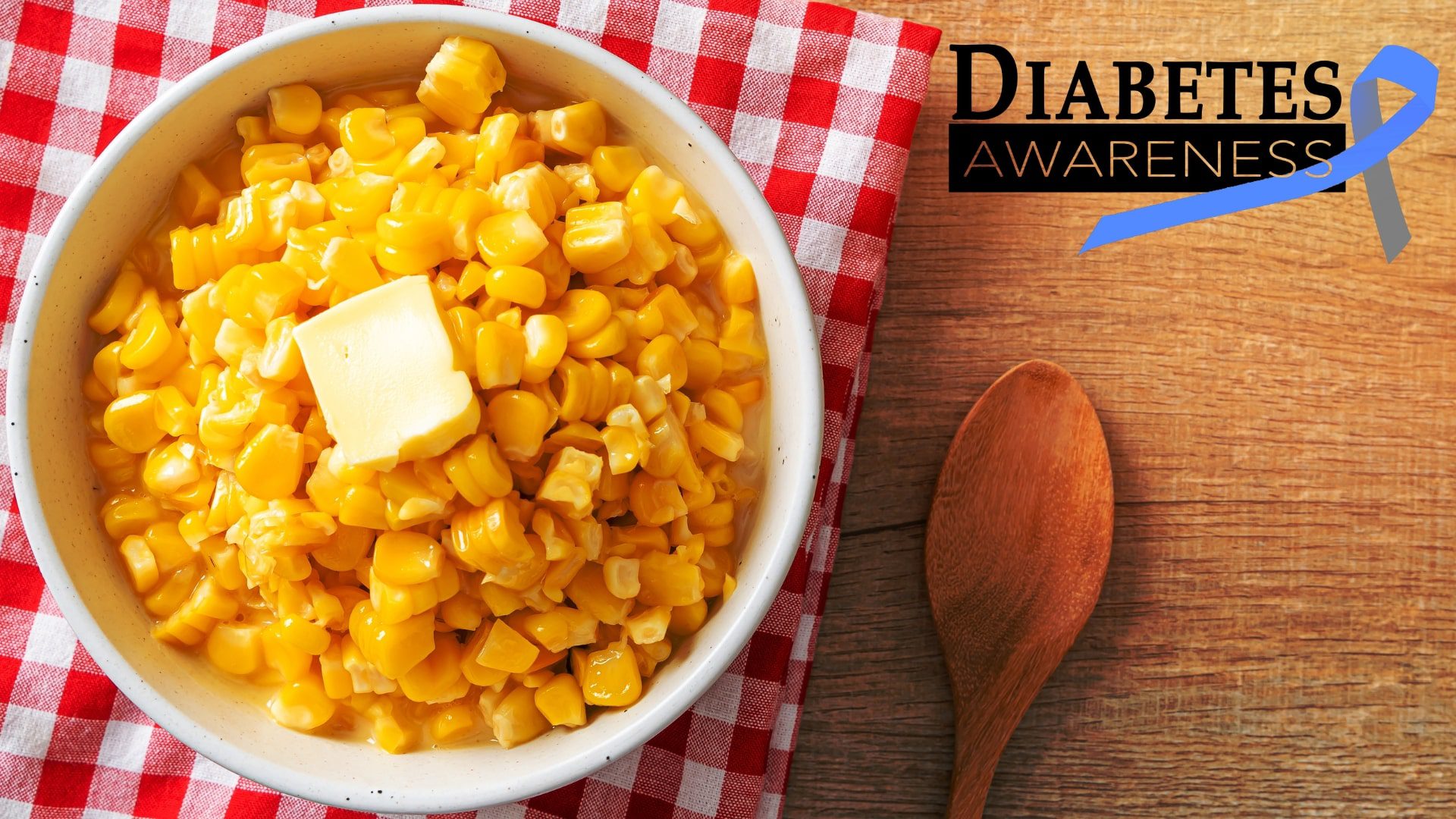
Sweet corn is a widely loved food, known for its natural sweetness, soft texture, and rich nutritional value. But for people with diabetes, the question often arises: Is sweet corn safe to eat, or does it increase blood sugar levels? This article explains the benefits, risks, nutrition facts, and how diabetics can safely include sweet corn in their diet.
Table of Contents
- Is Sweet Corn Safe for Diabetic Patients?
- Glycemic Index and Glycemic Load of Sweet Corn
- Nutritional Value of Sweet Corn (Per 100g, Boiled)
- Benefits of Sweet Corn for Diabetic Patients
- Side Effects and Risks of Sweet Corn for Diabetes
- How Can Diabetic Patients Eat Sweet Corn Safely?
- Who Should Avoid Sweet Corn?
Is Sweet Corn Safe for Diabetic Patients?
Yes, sweet corn can be safe for diabetic patients when eaten in moderation. It contains natural carbohydrates and sugar, which means it can slightly raise blood sugar levels. However, its low glycemic index (GI 52–55) and high fiber content help slow down sugar absorption and prevent sudden glucose spikes.
The key is controlling portion size and balancing sweet corn with protein or healthy fats.
Glycemic Index and Glycemic Load of Sweet Corn
The Glycemic Index (GI) represents how quickly a food raises blood sugar.
| Type | GI Value | Glycemic Load (GL) |
|---|---|---|
| Sweet Corn (boiled) | 52–55 (Low-GI) | 8–10 (Low-GL) |
Low GI and GL values mean that sweet corn releases sugar more slowly into the bloodstream, making it safer for diabetics compared to high-GI foods such as white rice or potatoes.
Nutritional Value of Sweet Corn (Per 100g, Boiled)
| Nutrient | Amount |
|---|---|
| Calories | 86 kcal |
| Carbohydrates | 19 g |
| Fiber | 2.7 g |
| Protein | 3.4 g |
| Sugar | 6.3 g |
| Fat | 1.3 g |
| Vitamin C | 11% DV |
| Potassium | 270 mg |
High fiber helps improve digestion, boost gut health, and control appetite.
Benefits of Sweet Corn for Diabetic Patients
Helps Control Blood Sugar
Fiber slows digestion and prevents rapid glucose rise.
Supports Heart Health
Rich in antioxidants like lutein and zeaxanthin that reduce inflammation and cholesterol risk.
Good for Weight Management
Keeps the stomach full for longer and reduces cravings.
Improves Gut Health
Acts as a natural prebiotic that supports healthy gut bacteria.
Side Effects and Risks of Sweet Corn for Diabetes
Although beneficial, excessive use may cause:
-
Increased blood sugar when eaten in large quantities
-
Bloating or gas due to fiber
-
High carbohydrate load if paired with other starchy foods
-
Canned corn may contain added salt, sugar, and preservatives
Diabetics should avoid processed corn products such as cornflakes, popcorn with butter, corn syrup, corn flour snacks, and sweetened canned corn.
How Can Diabetic Patients Eat Sweet Corn Safely?
Tips for Safe Consumption:
-
Eat ½ cup (80–100 g) boiled sweet corn per serving
-
Pair with protein like eggs, paneer, tofu, or sprouts
-
Avoid adding butter, cheese or excessive salt
-
Prefer boiled or grilled corn instead of fried
-
Do not combine with rice, potatoes, or pasta in one meal
Best Time to Eat Sweet Corn for Diabetics
The best time to consume sweet corn is:
-
During daytime or morning
-
Before exercise or walking, so glucose is utilized for energy
Avoid eating sweet corn late at night.
Who Should Avoid Sweet Corn?
People should avoid or limit sweet corn if they have:
-
Uncontrolled diabetes
-
Severe digestive problems like IBS
-
Corn allergy
Sweet corn is safe and healthy for diabetic patients when eaten in the right portion and combined with balanced food choices. Its low GI, fiber, vitamins, and antioxidants make it nutritious and beneficial for heart and digestive health. However, overconsumption or processed forms can increase blood sugar.
Moderation and meal balance are the keys.


